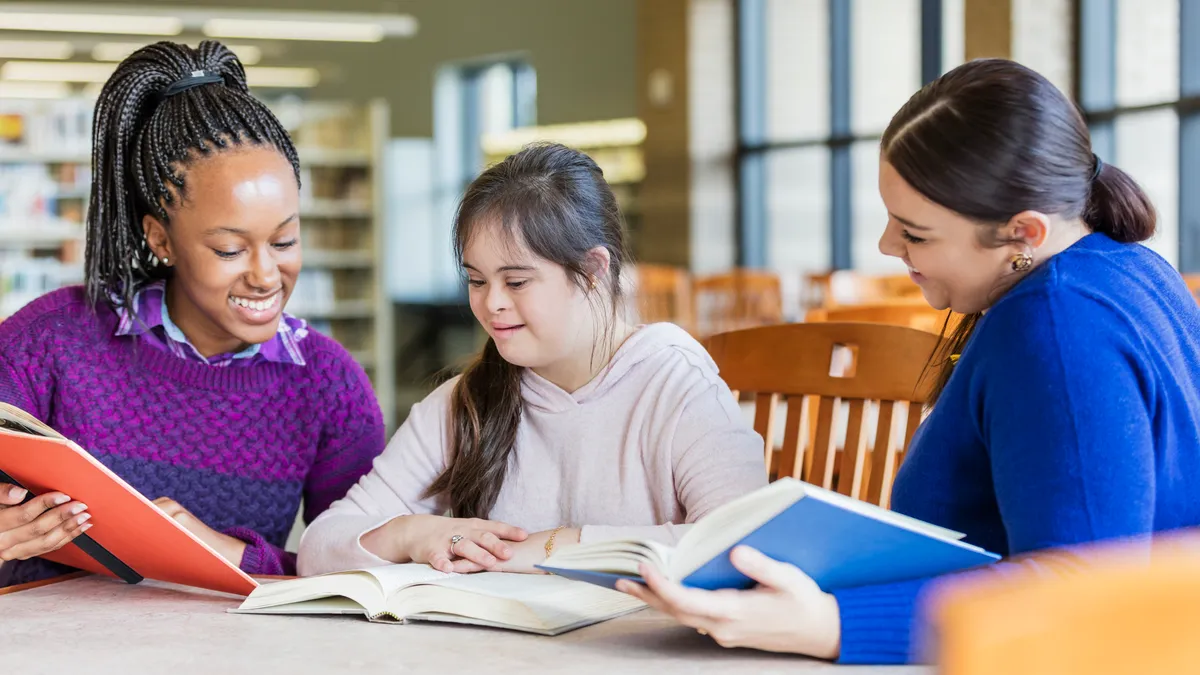Dive Brief:
- Pennsylvania recently launched a grant program to seed curriculum programs across the state that highlight people with disabilities who have made political, economic and social differences. The three-year grants of up to $30,000 are expected to be available starting in the 2023-24 school year.
- Sam Drazin, executive director of the curriculum nonprofit Changing Perspectives, who describes himself as a person with a disability, said what stands out about the disability curriculum program in Pennsylvania is that it is designed for all levels of K-12 and not just older students. Educators, he said, should talk with students about disabilities and differences at the start of their education.
- “A lot of times, I find schools will use disability awareness as a reactive approach to exclusion and bullying,” Drazin said. “We need to look at disability awareness as a proactive approach for young people.”
Dive Insight:
Drazin, a former elementary school teacher, said disability inclusive curriculum for very young students, like pre-kindergarteners, needs to be tailored to how they view the world. He noted that typically all students see differences — but challenging behavior like bullying doesn't appear until 4th or 5th grade.
“At pre-K, you’re not talking as explicitly about disabilities, but expressing how we are different inside and outside,” he said.
A better approach with younger students is to introduce stories or materials about people who have visible disabilities, as they can begin to connect more easily to those differences, such as when someone uses a wheelchair. He also encourages schools to embed curriculum with books and videos like “Wonder” and “Out of My Mind,” which highlight people with disabilities, rather than having classes spotlight specific students in a classroom or school building.
In this way, students can begin to share, reflect and develop empathy for the characters in the books before expanding what they’ve learned to interactions with classmates and peers in the community.
“That’s a high risk,” he said. “You want to build a comfort level around the conversation and common language, so when we migrate to students with disabilities in the community, we already have that structure and foundation.”
That doesn’t mean educators should shy from using the word “disability,” said Drazin. He applauds Pennsylvania for including the word in the title of their new program, as he's seen educators hesitate to use it because they believe the word has negative connotations.
"I encourage them to not only use the word, but frame it as a positive — as another component that makes up our school community and our society,” he said.












